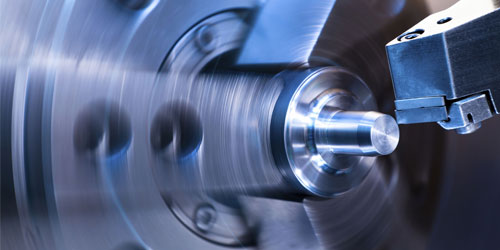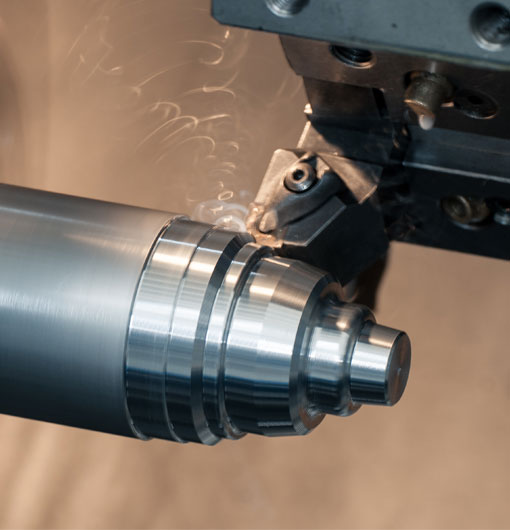In the world of Computer Numerical Control (CNC) machining, 2-axis CNC turning stands out as one of the most widely used and efficient methods for manufacturing intricate parts with high precision. This blog post will delve into the art of 2-axis CNC turning, providing insights into the process, selecting the right tools, optimizing parameters, and showcasing applications in various industries.
The 2-Axis CNC Turning Process
Two-axis CNC turning involves the use of computer-controlled machines to accurately shape and cut workpieces while rotating around a single axis. This cutting process is particularly suited for creating cylindrical parts, such as shafts, hubs, connectors, and sleeves. 2-axis CNC turning combines the rotational capabilities of a lathe with the precision and efficiency of CNC technology, streamlining the manufacturing process and enabling faster production of complex parts.
Anatomy of a 2-Axis CNC Lathe
Before delving into the actual CNC turning process, let's familiarize ourselves with the primary components of a 2-axis CNC lathe.
1. Spindle: The spindle is responsible for rotating the workpiece and providing the necessary motion for the cutting process.
2. Chucking System: This system holds the workpiece securely in place throughout the turning operation.
3. X and Z Axes: These are the two axes on which the CNC lathe operates. The X-axis controls the movement of the cutting tool along the radial direction, while the Z-axis governs the movement in the axial direction.
4. Cutting Tools: These are specialized bits employed for various turning operations, such as facing, grooving, boring, and parting.
5. Tool Turret: The tool turret holds multiple cutting tools and rotates to select a specific tool for each operation.
6. Tailstock: This component supports the workpiece at the non-driven end, enhancing stability during the turning process.
Selecting the Right Tools for 2-Axis CNC Turning
Choosing the appropriate tools is a critical aspect of 2-axis CNC turning, as different materials and designs demand specific tooling to achieve the desired quality and precision. Here are a few guidelines to follow when selecting tools for CNC turning:
1. Materials: Consider the workpiece material and its properties, such as hardness, tensile strength, and machinability. For example, carbide inserts are ideal for hard and abrasive materials, while high-speed steel (HSS) tools are suitable for softer materials.
2. Cutting Tool Geometry: The tool's shape, cutting edge angle, and rake angle all influence the cutting process's efficiency and the final part's quality.
3. Coatings: Tool coatings, like Titanium Nitride (TiN) and Titanium Carbonitride (TiCN), can enhance cutting performance and extend tool life by reducing friction and wear.
4. Toolholders: Use the right type of toolholder to ensure proper insert seating, alignment, and rigidity during cutting operations.
Optimizing Parameters for 2-Axis CNC Turning
Once you've selected the right tools for your project, the next step is to fine-tune the parameters for 2-axis CNC turning. Factors like cutting speed, feed rate, depth of cut, and tool paths can significantly affect the overall efficiency and accuracy of the process.
1. Cutting Speed: This refers to the speed at which the workpiece rotates. Optimal cutting speeds depend on factors like workpiece material, tool geometry, and machine capabilities.
2. Feed Rate: The feed rate is the speed at which the cutting tool moves along the workpiece. A balanced feed rate is essential to prevent excessive tool wear and achieve a precise cut.
3. Depth of Cut: The depth of cut determines the amount of material removed during each pass. Choose the appropriate depth based on tool strength and workpiece material properties.
4. Tool Paths: Efficient tool path planning can help minimize cutting time, reduce tool changes, and maintain desired tolerances and surface finishes.
2-Axis CNC Turning Applications in Various Industries
2-axis CNC turning finds use across a broad array of industries, thanks to its versatility and precision capabilities. Some prime examples include:
1. Automotive: 2-axis CNC turning is involved in manufacturing engine components, transmission parts, and suspension systems.
2. Aerospace: Highly accurate and intricate parts like turbine components and landing gear elements are often produced using 2-axis CNC turning.
3. Medical: CNC lathes are widely employed to create customized implants, orthopedic devices, and surgical instruments.
In summary, 2-axis CNC turning offers an effective and precise solution for producing various intricate parts across numerous industries. By understanding the process, selecting the right tools, optimizing parameters, and exploring their applications, you can ensure that your 2-axis CNC turning projects deliver high-quality, accurate components that meet industry demands.
2-axis cnc turning













